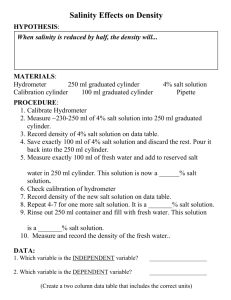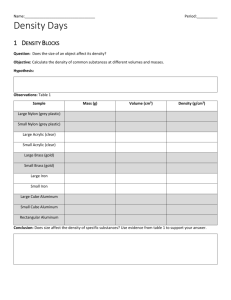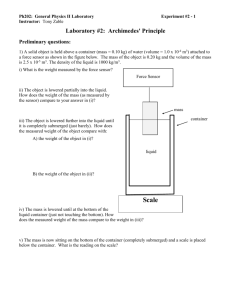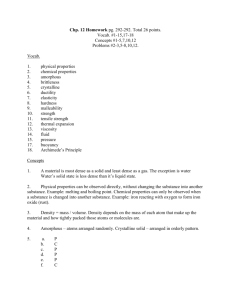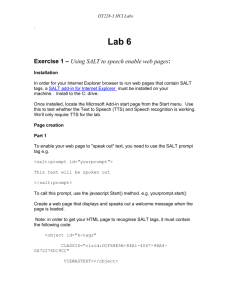Archimedes' Principle Lab Report: Density & Buoyancy
advertisement
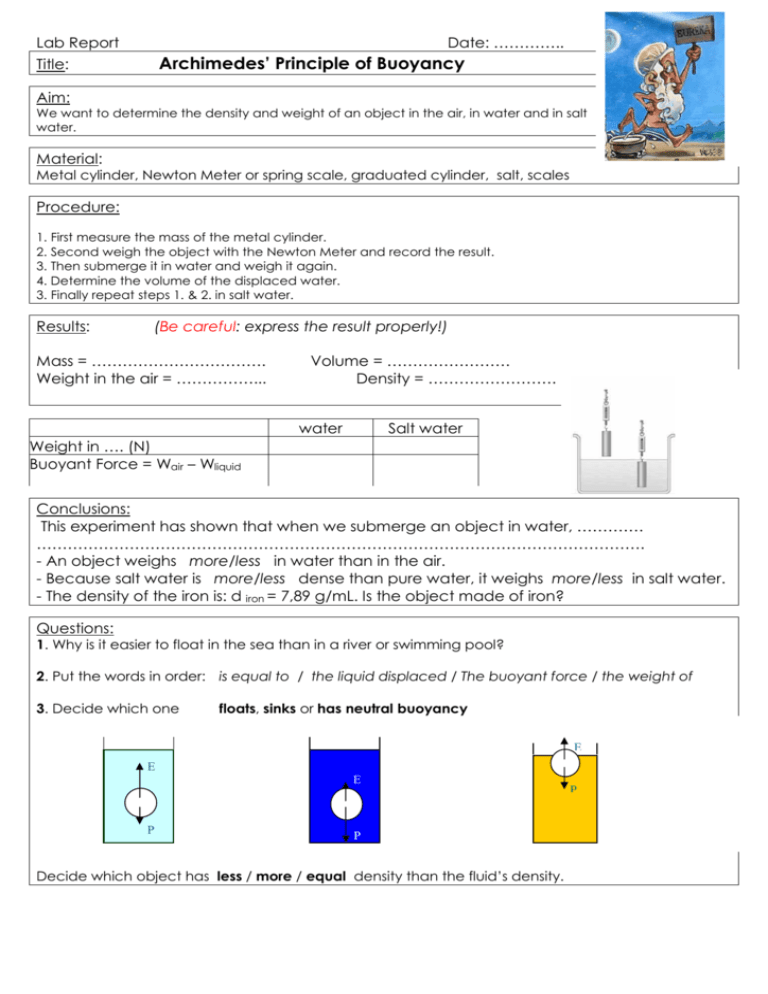
Lab Report Date: ………….. Archimedes’ Principle of Buoyancy Title: Aim: We want to determine the density and weight of an object in the air, in water and in salt water. Material: Metal cylinder, Newton Meter or spring scale, graduated cylinder, salt, scales Procedure: 1. First measure the mass of the metal cylinder. 2. Second weigh the object with the Newton Meter and record the result. 3. Then submerge it in water and weigh it again. 4. Determine the volume of the displaced water. 3. Finally repeat steps 1. & 2. in salt water. Results: (Be careful: express the result properly!) Mass = ……………………………. Weight in the air = ……………... Volume = …………………… Density = ……………………. water Salt water Weight in …. (N) Buoyant Force = Wair – Wliquid Conclusions: This experiment has shown that when we submerge an object in water, …………. ………………………………………………………………………………………………………. - An object weighs more/less in water than in the air. - Because salt water is more/less dense than pure water, it weighs more/less in salt water. - The density of the iron is: d iron = 7,89 g/mL. Is the object made of iron? Questions: 1. Why is it easier to float in the sea than in a river or swimming pool? 2. Put the words in order: is equal to / the liquid displaced / The buoyant force / the weight of 3. Decide which one floats, sinks or has neutral buoyancy E E E P P Decide which object has less / more / equal density than the fluid’s density. P

